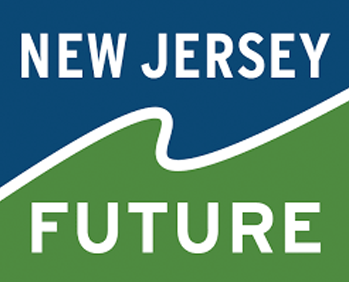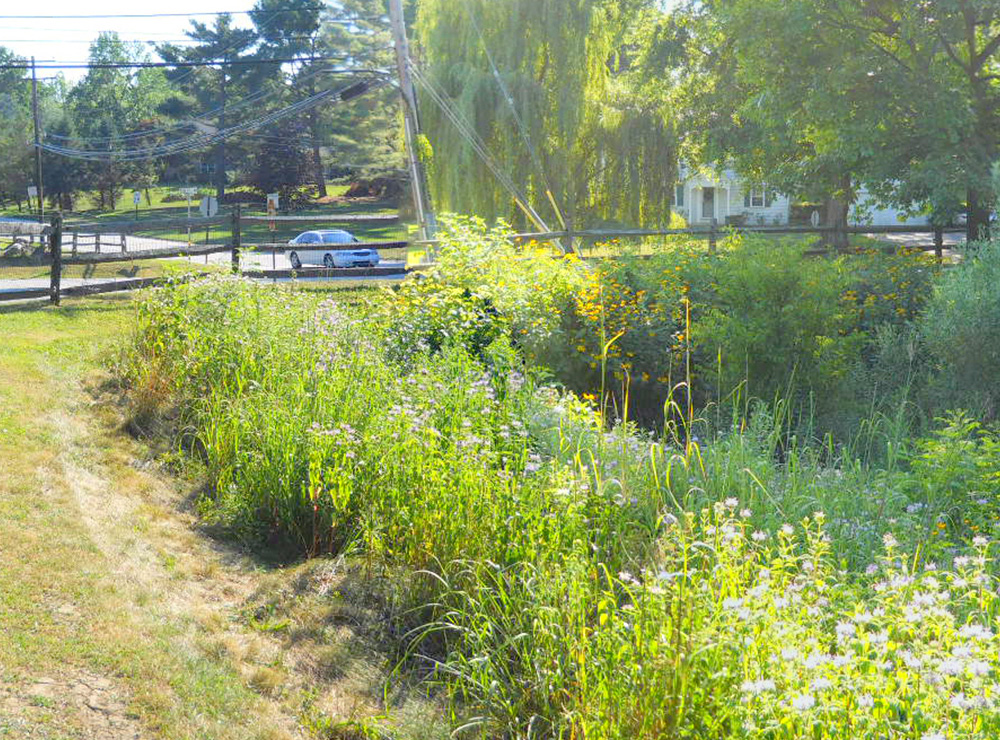
Addressing Challenges. Solving Problems.
Think GI can’t work on your site? You’re probably mistaken. Keep an open mind. Learn here about keys to success and how to tackle common problems.
The recent amendments to NJDEP’s stormwater management rule and Best Management Practices (BMP) Manual represent a paradigm shift in the approach to stormwater management. Now, the approach to site development and engineering design must shift as well.
Click through the sliders below for specifics and tips on overcoming challenges.

Shallow Seasonal High Water Table

In areas with a shallow depth to the seasonal high water table elevation, select green infrastructure with shallow profiles or design green infrastructure to be submerged within the groundwater table. For example, set pervious pavement adjacent to a constructed wetland. Instead of recharging, the pervious pavement would flow horizontally into the adjacent wetland area to assist in maintaining the wetland hydrology.
Green infrastructure BMPs that have a shallow profile include the following:
- Pervious pavement such as asphalt, concrete, and pavers
- Vegetated filter strip
Green infrastructure BMPs that can be set into the water table include:
- Manufactured Treatment Devices
- Wet pond
- Constructed wetland
- Subsurface gravel wetland
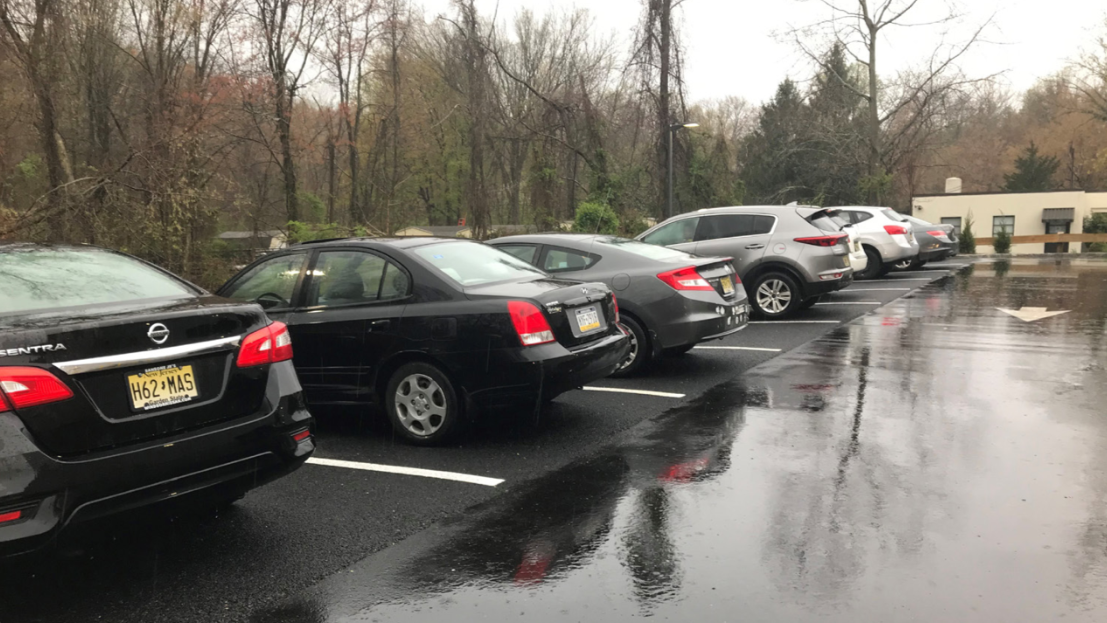
Poor Soils

Poor soils are generally defined as soils that do not provide adequate infiltration. When working with these conditions, the design intent is to filter and slowly release stormwater via evapotranspiration, beneficial reuse, and/or discharge to a receiving storm sewer, waterway, or surface area over time. The following approaches are examples of how to achieve this:
- Pervious pavement with underdrain and outlet structure
- Lined/underdrained sand filter
- Lined/underdrained shallow bioretention system
- Structured bioretention manufactured treatment device (MTD)
- Grass swale
- Vegetated filter strip
- Cistern
- Wet pond
- Constructed wetland
- Subsurface gravel wetland
Urban Redevelopment
In urban redevelopment areas, the design intent is to create compact BMPs to filter and slowly release stormwater via infiltration, evapotranspiration, beneficial reuse and/or to a receiving storm sewer over time. The following are examples of green infrastructure and design Solutions that can be used to achieve this:
- Rain garden
- Structured bioretention MTD
- Green roof
- Blue roof (stand alone or in combination with green roof)
- Cistern
- Under- sidewalk storage adjacent to and feeding streetscape planting bed
- Sand filter
- Disconnection of stormwater from combined sewers using green infrastructure and direct connection to combined sewer outfalls
No Receiving Stormwater or Waterway
In situations where there is no receiving storm sewer or waterway, the design intent is to provide disconnection along the flow path of stormwater runoff to provide water quality, evapotranspiration, and/or infiltration, with any remaining water runoff continuing as surface flow.
- Infiltration-only bioretention system
- Pervious pavement
- Vegetated filter strip
- Infiltration basin
- Infiltration sand filter
- Bubbler inlet discharge from other BMPs
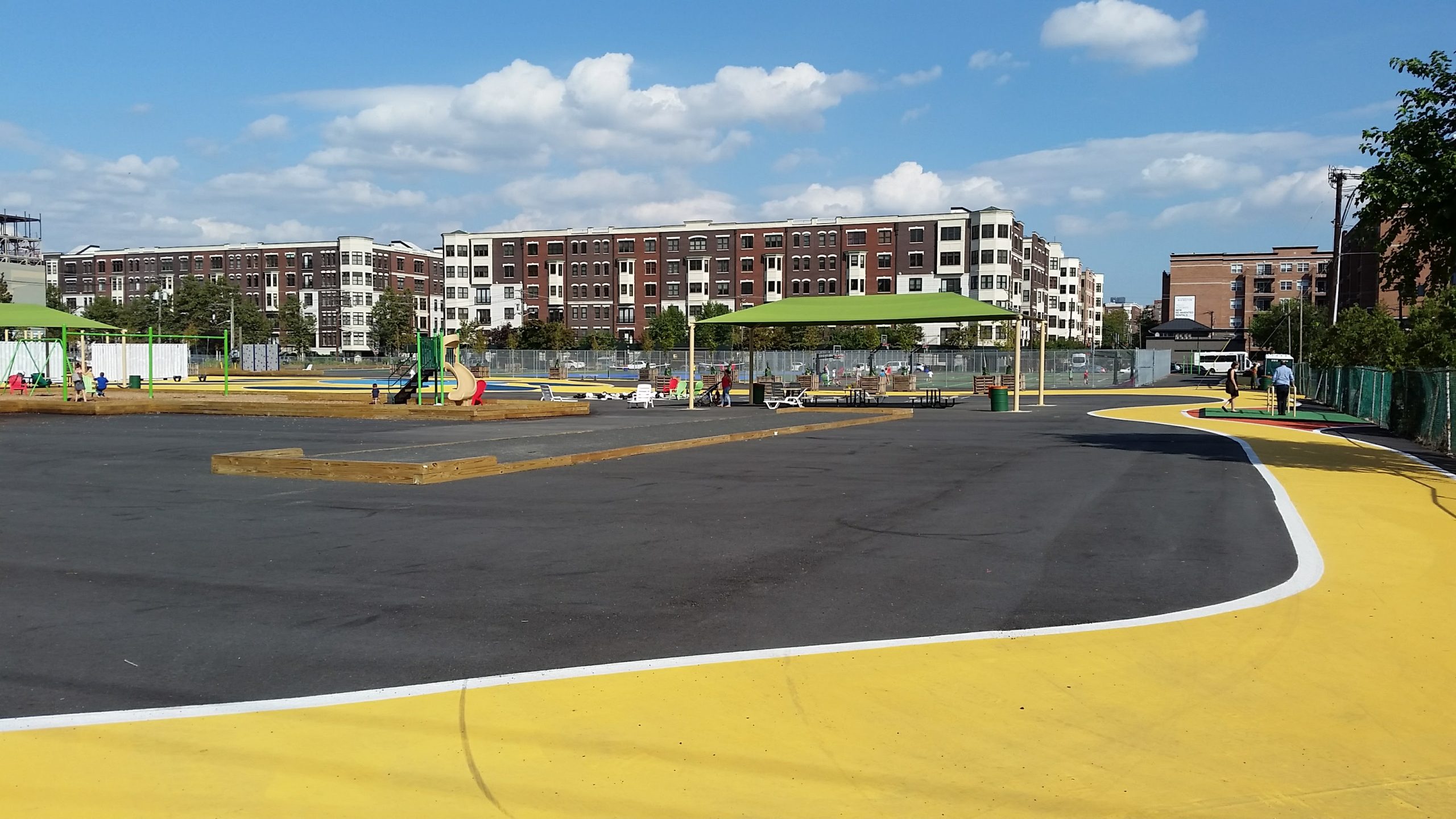
Brownfield Areas

Brownfield areas are similar to urban redevelopment areas except the design intent is to keep stormwater separate from impacted areas and create compact BMPs to filter and slowly release stormwater via evapotranspiration, beneficial reuse, and/or to a receiving storm sewer over time. The following approaches are examples of how to achieve this:
- Lined and underdrained bioretention system
- Structured bioretention MTD
- Pervious pavement with underdrain and outlet structure if over impermeable cap
- Sand filter with underdrain and liner
- Cistern
- Green roof
- Blue roof (stand-alone or in combination with green roof)
- Lined wet pond
- Lined subsurface gravel wetland
- For more information on brownfield areas, see the Brownfield and Contaiminated Site Remediation Act, N.J.S.A. 58:10B-1. Full reference information is available in the Resources List.
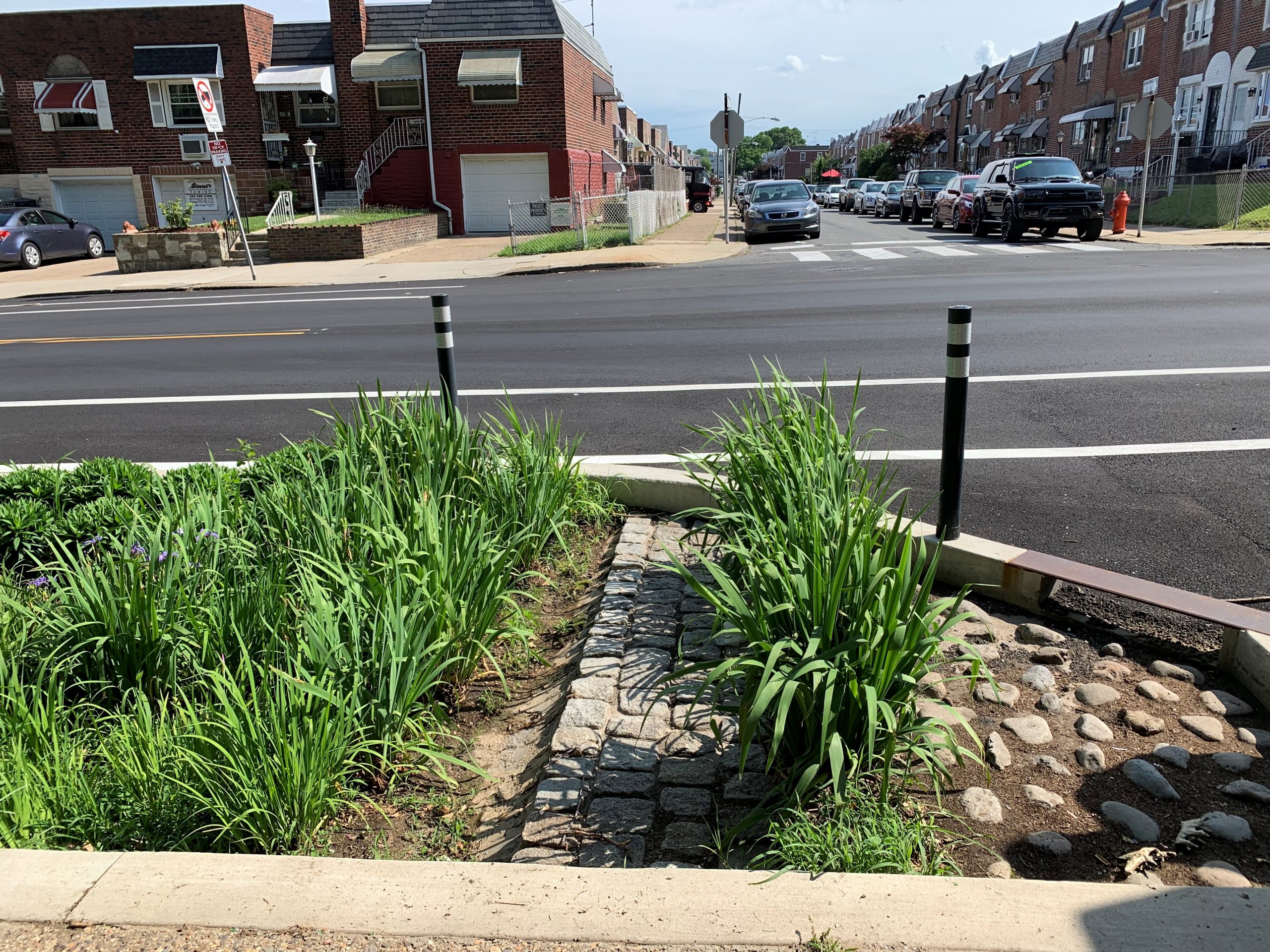
Proper Construction

Incorporate construction specifications, detail, notes, and plan requirements to assist the contractor in successfully completing green infrastructure installations. For example:
- Require geotechnical engineer to observe excavation and suitability of subgrades; perform soil testing on subsurface layers to remain and on all replacement soil mixes.
- Require under-excavation of infiltration-based systems during construction, with final excavation to design subbase depth and installation of engineered soil layers to be performed only after heavy equipment is no longer traversing the area and after the entire drainage area is stable.
- Specify uniformly graded coarse sand as the surface layer of infiltration basins.
- Specify bioretention soil based on the expected silt and nutrient loading to the BMP.
- Require temporary forebays at all inlets to BMPs.
- Require silt fence to protect BMP perimeters during construction.
- Require sod to stabilize steep slopes around BMPs.
- Design wet pond depths to allow for the accumulation of silt while maintaining at least minimum design depth.
- Utilize low-ground-pressure vehicles to minimize soil compaction during construction.
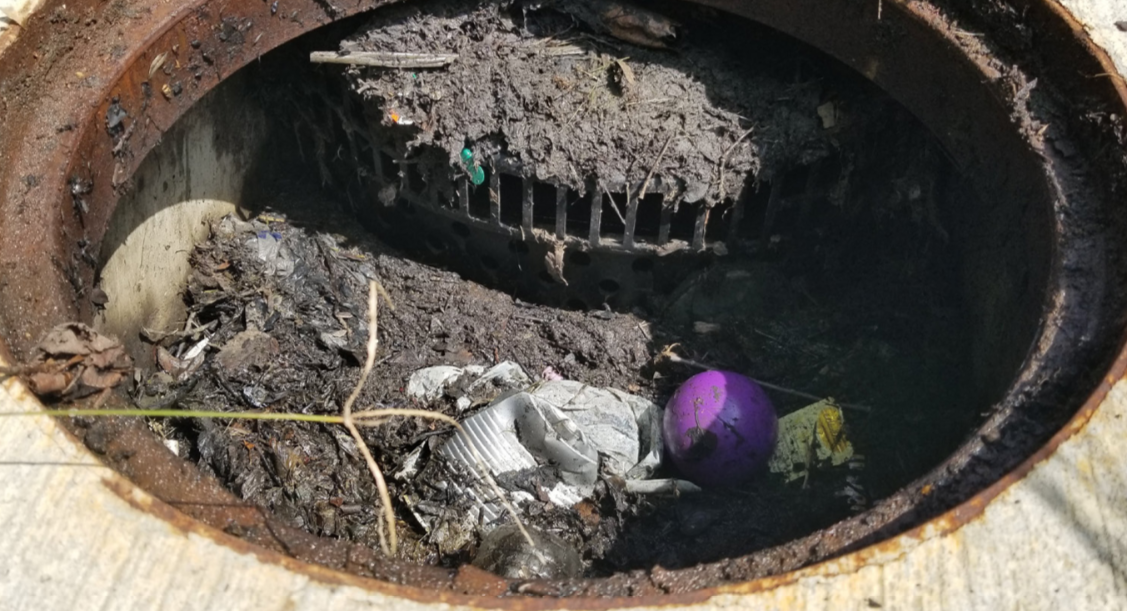
Maintenance

Perhaps the most important consideration in successful green infrastructure implementation is long-term maintenance. Systems must be designed with maintenance in mind and an understanding of responsible parties. Poor maintenance for traditional gray infrastructure is easier to ignore, as it is largely below grade systems invisible to the eye. Poor maintenance of green infrastructure is much more noticeable and leads to negative perceptions of these systems when they fall into disrepair.
Maintenance is not complicated, but it is does require additional knowledge and accountability. Some common maintenance concerns are listed below. Understanding these problems prior to installation and sale of a project can help contractors and clients avoid negative outcomes.
Standing Water
Problem: Green infrastructure, like gray infrastructure, has a designed drainage time. When the system experiences a failure, water may accumulate and fail to drain at the BMP’s low point. This can lead to clogging of outlet structures and mosquito breeding. While vegetation can reduce this problem from gray infrastructure conditions, failures elsewhere in the system can oversaturate soils and cause vegetation loss.
Solution: Standing water can be avoided through proper construction, regular inspection, and prompt repair. Unanticipated low points in the design can be rectified through regrading of the BMP. During the design process, plans should be evaluated to ensure that slopes are sufficient to convey water. Overflow devices and outlet controls should be inspected after storms exceeding one inch in rainfall and at least four times annually for clogging that may prevent water from leaving the system. The NJDEP recommends bi-weekly inspections during vegetation establishment/restoration and a minimum of one inspection during the growing season and one during the non-growing season for established vegetation.
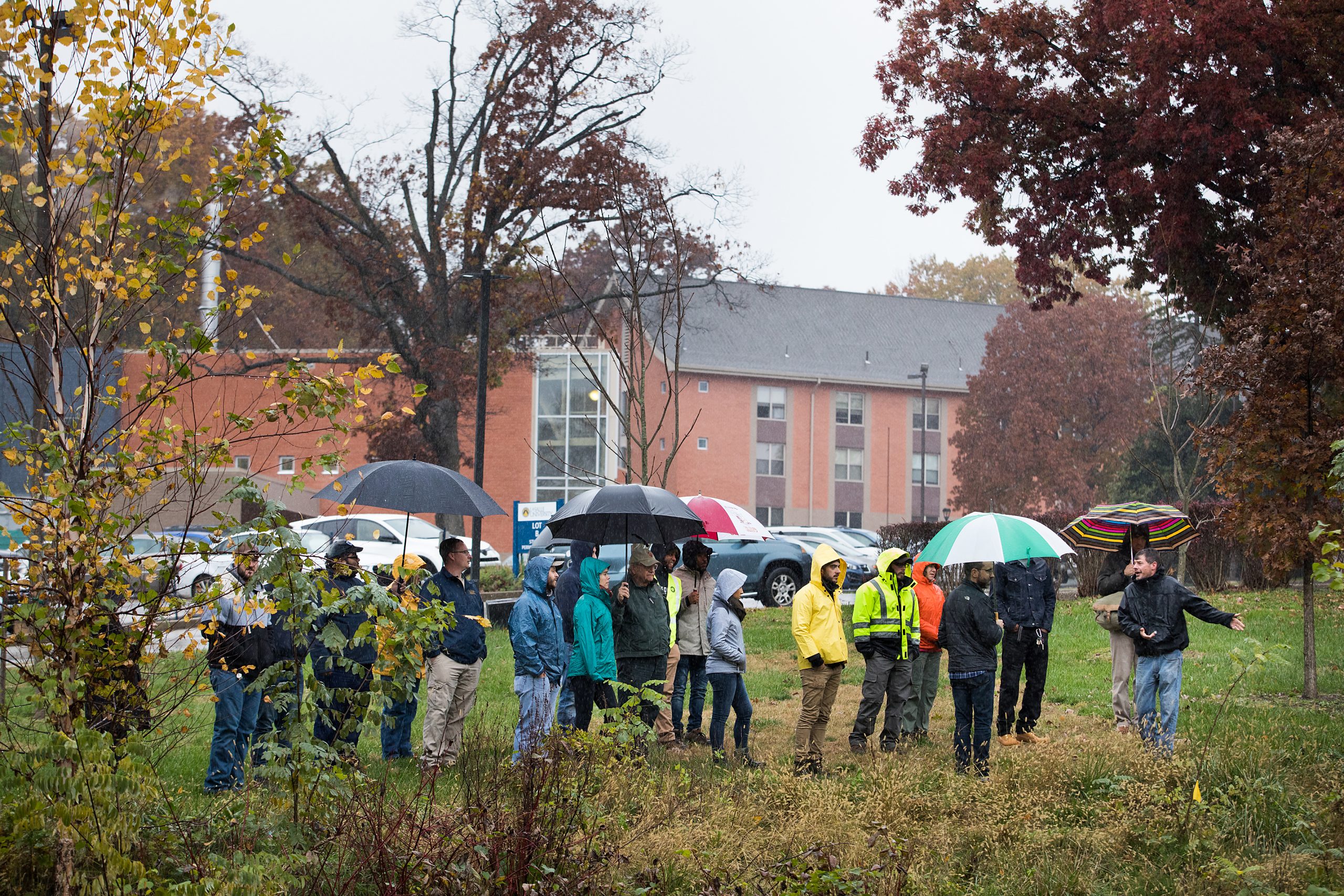
Dead or Missing Vegetation

Problem: A common complaint with green infrastructure systems is that vegetation looks unattractive, dead, or sparse. These issues often stem from a lack of proper maintenance. Missing vegetation can not only give green infrastructure a poor reputation, but can lead to pests, ineffective water quality treatment, and increased erosion.
Solution: Designs should incorporate a sufficient variety of plants to ensure biodiversity while maintaining a degree of simplicity. Biodiversity allows a system to maintain its effectiveness when certain species perform poorly. Simplicity allows maintenance crews to more easily identify intentional plantings from weeds. Additionally, soil profiles should be designed to support plant health. Regular soil testing will ensure that the system continues to thrive during establishment. Training maintenance crews on the plant maintenance is especially important for the long-term viability of a green infrastructure system. Proposed spacing of plants and seasonality must be take into account in the BMP design. These are living systems and different plants emerge and dieback at different times of year. Over reliance on a limited variety of species spaced several feet apart will jeopardize the year-round function and aesthetics of the BMP. Planting palettes composed primarily with grasses, a variety of perennials, and tight spacing to limit mulch will have better long-term performance.
Erosion
Problem: Erosion is always a concern when it comes to stormwater management. Intense rainfalls can damage stormwater infrastructure. With green infrastructure, erosion can be especially harmful to vegetative components. When erosion leads to plant loss, the system can fail to function as designed and become an eyesore. Sand infiltration layers and bioretention soil media may also become clogged as eroded sediment accumulates in these systems.
Solution: Erosive damage originates from high-velocity runoff. In order to mitigate these speeds, the system should incorporate soil erosion and sediment control devices, as specified in the New Jersey Standards for Soil Erosion and Sediment Control. Riprap aprons, consisting of larger stones, are designed to dissipate speeds at the inlets and outlets of pipes and outlet controls. Appropriate planting soil depths should also be maintained in order to ensure that plants will continue to thrive when erosion strips topsoil. Erosion control matting used in areas of steep slopes and swales will protect against these issues.
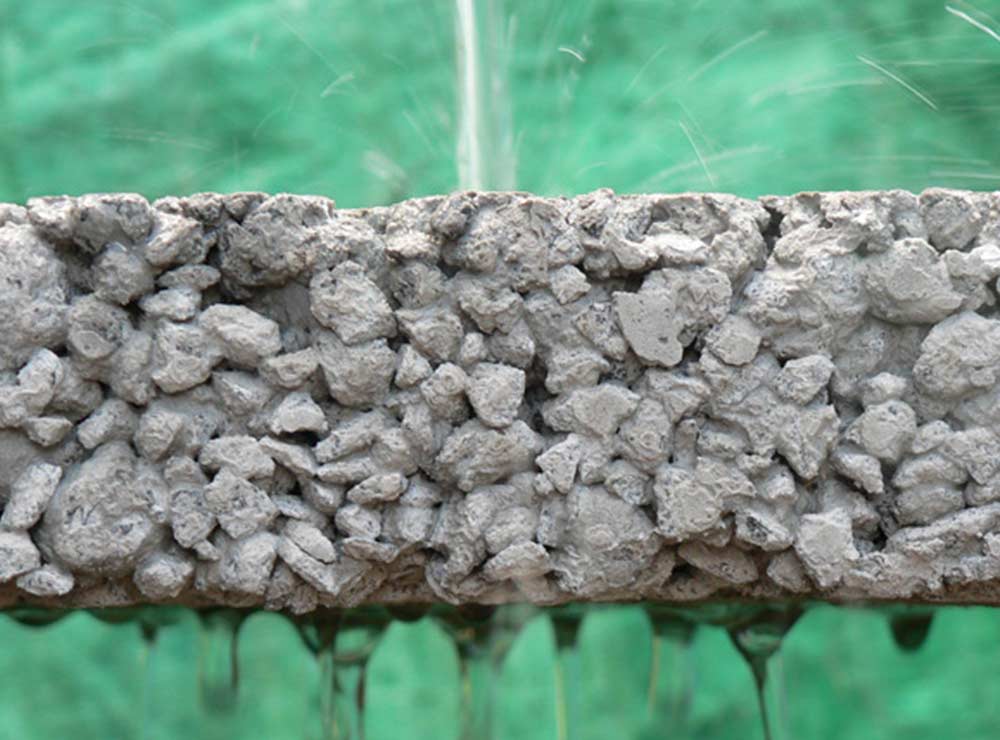
Clogged Pervious Pavement

Problem: While pervious pavement reduces the likelihood of potholes, black ice, and surface pooling, benefits are dependent upon maintenance of the system. The void space between pervious pavement aggregate, intentionally designed to let stormwater pass through, can become clogged with sediment and debris. This can severely impair the function of the system and lead to costly repair.
Solution: Maintenance procedures for pervious pavement can vary based upon composition, manufacturer, and geographic location of the project. In addition to inspecting outlet controls and cleanouts for clogging, the system should typically be cleaned biannually with a regenerative air vacuum. The optimal times for vacuuming are in the spring after the last snow events and in autumn after leaves fall. Maintaining these schedules will facilitate drainage and increase the lifespan of the system.
Site constraints sometimes create a perception that green infrastructure is difficult or impossible to utilize. This chapter includes examples and guidance on common obstacles to implementing green infrastructure.
Involve all stakeholders and professionals from the beginning. An integrative design process saves time and money and is vital to successful design.
- Developer
- End User
- Planner
- Building Architect
- Civil Engineer
- Geotechnical Engineer
- Landscape Architect
- Contractor
Analyze existing site conditions.
Consider sun exposures in siting buildings and BMPs.
Map, explore, and test soils as part of concept planning to guide BMP selection and siting.
Include green infrastructure design considerations and co-benefits when creating concept plans.
- Premiums on residential price points
- Added value from viewsheds, such as for outdoor restaurant seating or in/around an on-site recreation area
- Enhanced outdoor break areas for employees
- Shaded parking areas
- With pervious pavement, reduced potential for water/ice related liabilities, such as slip and fall risks
- Opportunities to highlight use of green infrastructure for site patrons
- Integration of pervious pavement systems with site amenities, such as courtyards, tot lots, playgrounds, sports courts, etc.
Maximize the use of small spaces.
- Locate green infrastructure in tandem with project structures
- Include more small, decentralized green infrastructure in order to best reduce the size and cost associated with end-of-pipe stormwater management systems. This will also maximize infiltration and reduce the affects of groundwater mounding.
- Use every “left over” area in the site layout to place decentralized BMPs (i.e. parking islands, around gutters, etc.)
Consider permitting early in the process.
- Seek NJDEP approval of innovative green infrastructure applications where appropriate (e.g. forested retention areas)
Green infrastructure is the solution.
